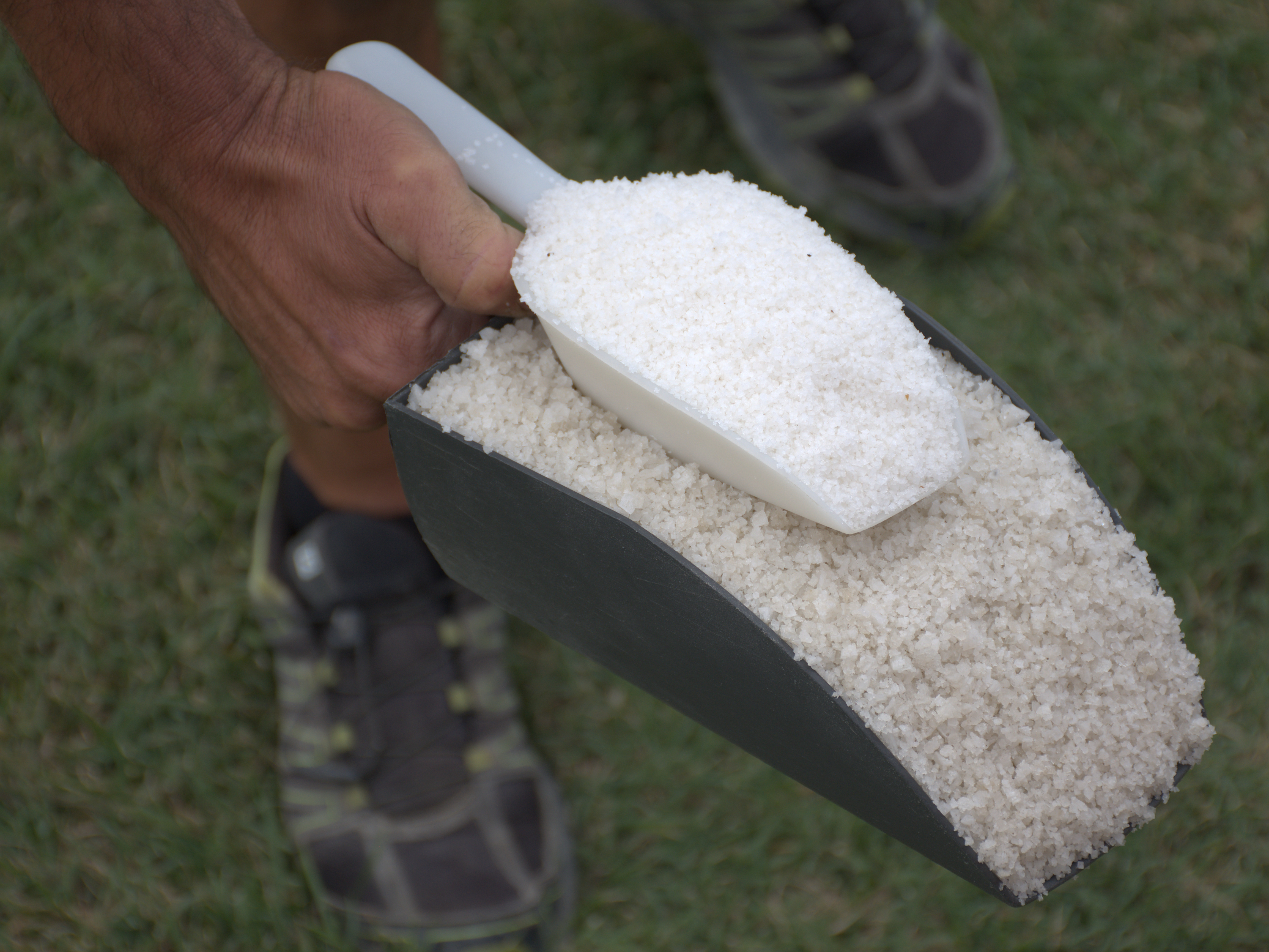Sel gris on:
[Wikipedia]
[Google]
[Amazon]
 Sel gris (pl. sels gris, "gray salt" in French) is a coarse granular
Sel gris (pl. sels gris, "gray salt" in French) is a coarse granular
 Sel gris (pl. sels gris, "gray salt" in French) is a coarse granular
Sel gris (pl. sels gris, "gray salt" in French) is a coarse granular sea salt
Sea salt is salt that is produced by the evaporation of seawater. It is used as a seasoning in foods, cooking, cosmetics and for preserving food. It is also called bay salt, solar salt, or simply salt. Like mined rock salt, production of sea sa ...
popularized by the French.
''Sel gris'' comes from the same solar evaporation salt pans as fleur de sel
''Fleur de sel'' ("flower of salt" in French; ) or ''flor de sal'' (also "flower of salt" in Portuguese, Spanish and Catalan) is a salt that forms as a thin, delicate crust on the surface of seawater as it evaporates. ''Fleur de sel'' has been c ...
but is harvested differently; it is allowed to come into contact with the bottom of the salt pan before being raked, hence its gray color. ''Sel gris'' is coarser than ''fleur de sel'' but is also a moist salt, typically containing 13 percent residual moisture.
Harvesting
The bottom of the salt pan () is typically composed of clay lined pools, basalt, sand, concrete, or tile. This keeps the salt from coming into contact with the silt beneath and becoming dirty. Every few days, or on occasion daily, the harvester (French: ) pushes or pulls the salt with a long wooden rake. This must be done carefully as the depth of the brine may be as little as and the clay bottom must not be penetrated at the risk of contaminating the salt. The salt is raked toward the sides of the pan where it is then shoveled into a pile and left to dry slightly before storing. of ''sel gris'' can be harvested in one day, whereas for ''fleurs de sel'' the daily yield is only .Use
Because of its mineral complexity and coarse grain size, ''sel gris'' can be used both as a cooking salt and a finishing salt. Being much denser thantable
Table may refer to:
* Table (furniture), a piece of furniture with a flat surface and one or more legs
* Table (landform), a flat area of land
* Table (information), a data arrangement with rows and columns
* Table (database), how the table data ...
and kosher salt, there is a lot more salt in an equivalent volume of ''sel gris''.
Because it is a moist salt, it does not suck all the moisture out of food when used as a finishing salt, unlike kosher salt (which is designed to absorb blood and other fluids from meat).
Examples
Most producers of fleur de sel also produce sel gris. *Sel gris de Guerande *Sel gris de l’Île de Ré
Île de Ré (; variously spelled Rhé or Rhéa; Poitevin: ''ile de Rét''; en, Isle of Ré, ) is an island off the Atlantic coast of France near La Rochelle, Charente-Maritime, on the northern side of the Pertuis d'Antioche strait.
Its high ...
*Sel gris de l’ Ile de Noirmoutier
*Grigio di Cervia
* Alcochete sal grosso
See also
*List of edible salts Edible salts, also known as table salts, are generally derived from mining ( rock salt) or evaporation (including sea salt). Edible salts may be identified by such characteristics as their geographic origin, method of preparation, natural impurities ...
References
{{Salt topics Chemical oceanography Edible salt French cuisine